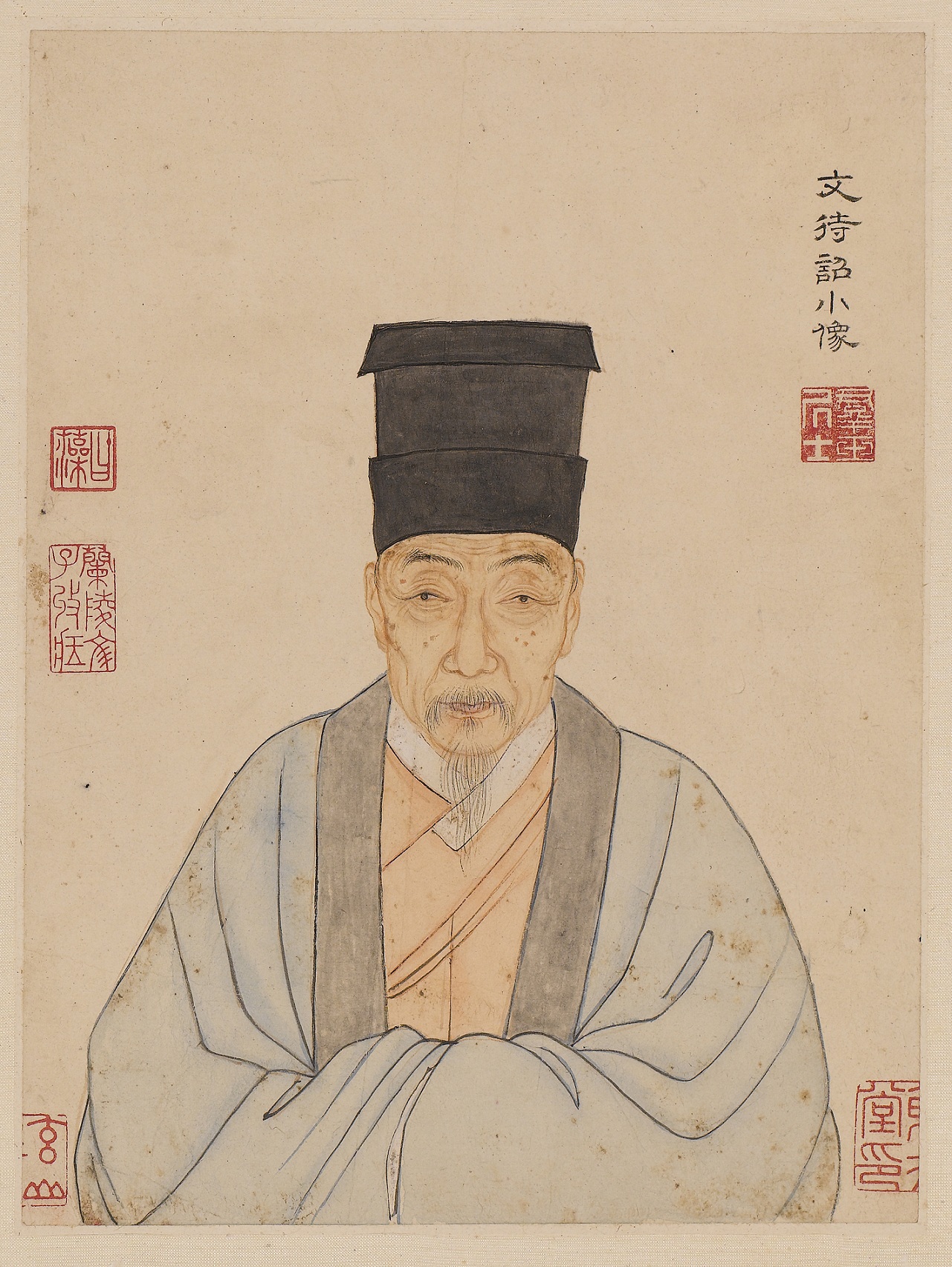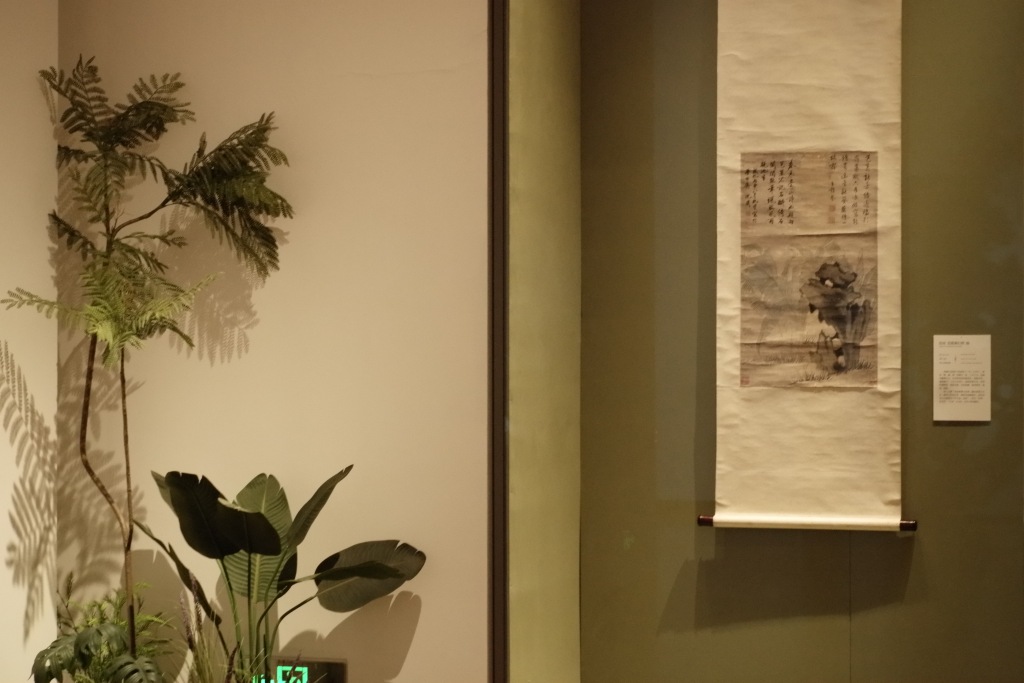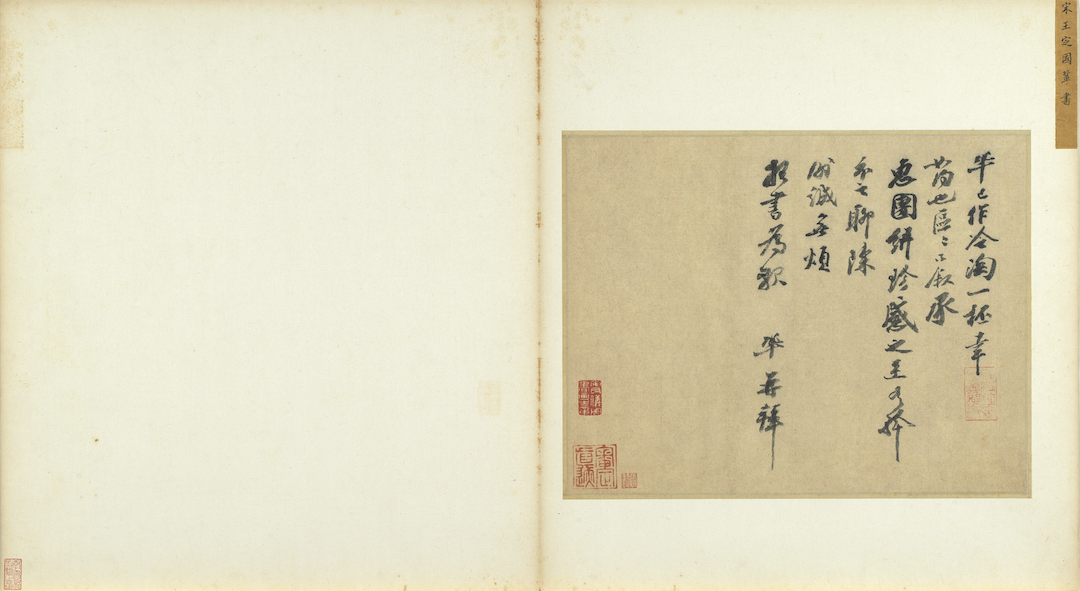

Today is Grain Rain. In ancient Jiangnan Wudi, before the Grain Rain Festival, the county magistrate purchased Dongting Biluochun tea as a tribute, which was called tea tribute.
"What's going on in the mountains? Brew wine with pine flowers, brew tea with spring water." In the poems and essays of Zhang Kejiu, a poet in the Yuan Dynasty, the rise and fall of the ages and the troubles of the world can be forgotten in a cup of tea. Tea is not only material, but also spiritual. Since the Tang and Song dynasties, literati of all dynasties have been fond of tea. Among the mountains and wild bamboo forests, beside the strange stones of pine and bamboo, one may chat with Ke Qing, or explore the mysteries and participate in good fortune. The participation of literati and refined scholars makes tea transform from a natural tea to a spiritual carrier containing culture and emotion.
Throughout the history of tea, it can be said that it is the evolution history of Chinese life aesthetics, and it is also a history of art. The "Poetry and Painting Asking Tea" series launched by "The Paper·Ancient Art" starts from the tea-picking scene, the art of poetry and painting, and the aesthetics of utensils, etc., to find the Chinese literati and refined scholars entrusted with a cup of tea, and to pursue Chinese tea culture. beauty of. In this issue, we are going into the West Mountain and East Mountain of Taihu Lake. In the misty mist, we are looking for "Biluo Chunxiang Baili Drunk" and the tea room paintings of Ming Dynasty literati.

Taihu Lake

Biluochun picking site The Paper
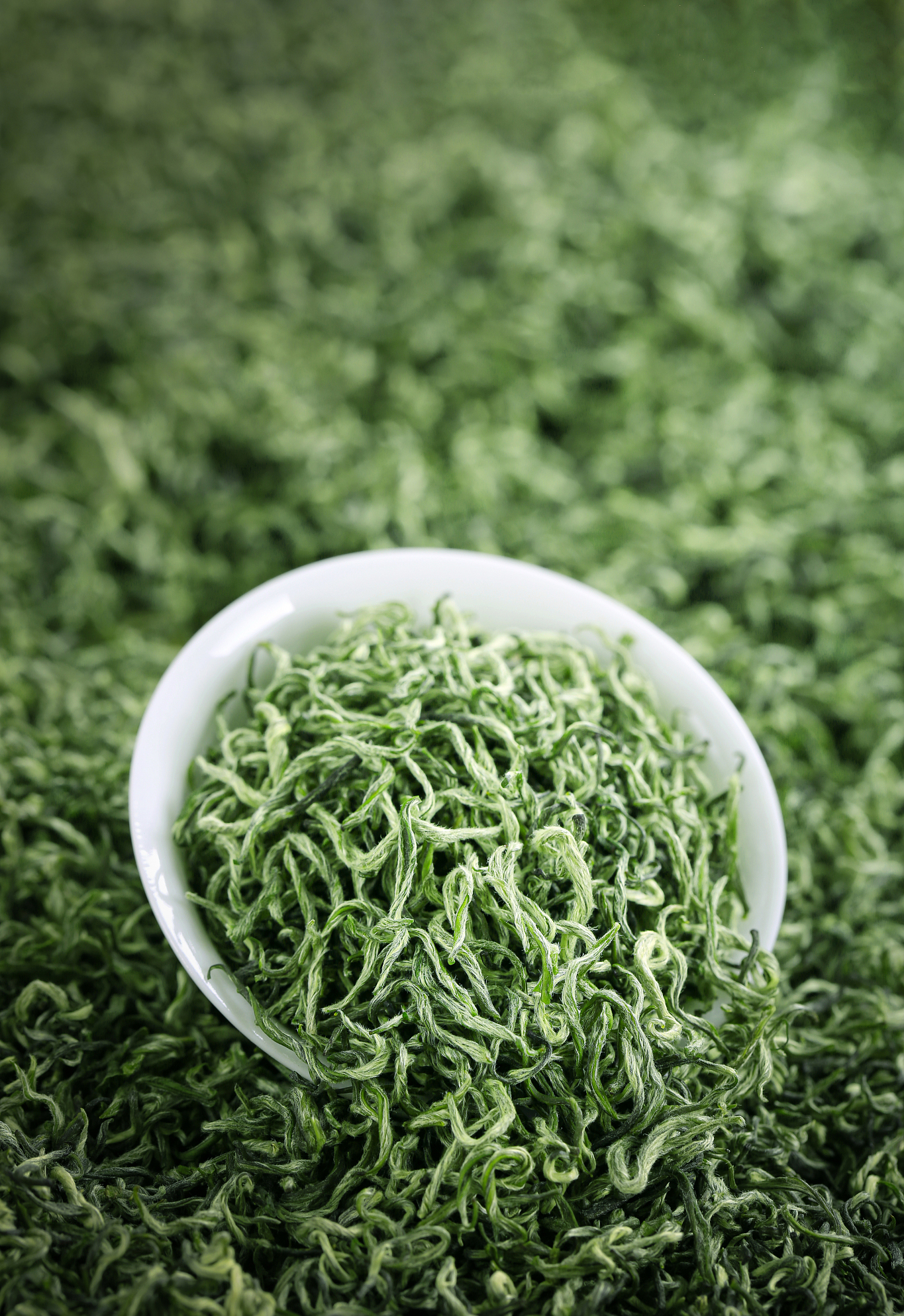
"Biluochun" is curly like a snail, silver and green
In the thirty-seventh year of Jiajing (1558), at the age of 89, Wen Zhengming, a master of calligraphy and painting of Wumen, revisited the shore of Taihu Lake and wrote "Six Poems in the Tomb of Youxuan" in running script. Although he is an octogenarian, Wen Zhengming is still full of energy and has amazing writing skills. "Qibaoquan" in "Six Poems of the Tomb of Youxuan" records his mood of drinking tea from the spring during this trip:
Where is the coldness and tranquility, and the secluded habitat is far away by the Taihu Lake.
Sweep the moss and sit on the three living stones, break the tea and taste the Qibao spring.
The green bamboo transmits the sound to the cloud, and the blue sky flows the shadow of jade.
Who will really reward after the expert goes? After rinsing the cold spring, I feel relieved.
Many literati in the south of the Yangtze River were fond of tea, and Wen Zhengming was one of them. According to legend, Wen Zhengming tasted the tea on the shore of Taihu Lake this time, which is called "Biluochun" by later generations.
Wen Zhengming, who is proficient in poetry, literature, calligraphy, and painting, is known as the "Four Schools of Wu School" together with Shen Zhou, Tang Yin, and Qiu Ying in the history of painting; in the history of calligraphy, Wen Zhengming is also known for being good at all styles. He was the leader of the calligraphy circle in the Ming Dynasty alone, and had many disciples under his command. He was the leader of the Wu School of Calligraphy after Shen Zhou.

Axis of Wen Zhengming's "Tea Tasting Picture", National Palace Museum, Taipei
Wen Zhengming also pinned his hopes on his official career, but he did not achieve great fame in his life, and he was recommended by the Imperial Academy until he was over half a hundred years old. Looking back at the 90-year period from Ming Chenghua to Jiajing that Wen Zhengming spanned in his life, the eunuch Liu Jin was in chaos before, and later the powerful minister Yan Song was in power. Persistence is doomed to fail in the middle and late Ming Dynasty. After considering for a long time between birth and entry into the world, I finally chose to resign from office and live in seclusion like my father's predecessors Zhuang Chang, Wu Kuan, and Wang Jia, and escaped into the world of poetry, tea and tea art.
Wen Zhengming is an out-and-out tea researcher. He wrote "Dragon Tea Records", which systematically discussed the "Tea Records" written by Song Dynasty Cai Xiang, and the calligraphy art and writing content of the book professional opinions were provided. Cooking springs and discussing tea is an indispensable part of Wen Zhengming's life. According to incomplete statistics, he has more than 150 tea poems, and left many tea paintings handed down from generation to generation, such as "Tea Tasting Picture", "Huishan Tea Party Picture", " "Ten Songs of Tea Set" and so on.
Not in the world, not dirty in the fashion. Not only Wen Zhengming, but everyone in the "Four Families of the Wu School" loves tea. Tea is like a flat boat, and paintbrush is used as oars to salvage them from the tightly netted reality and carry them to the paradise of Taoyuan in the spiritual world.
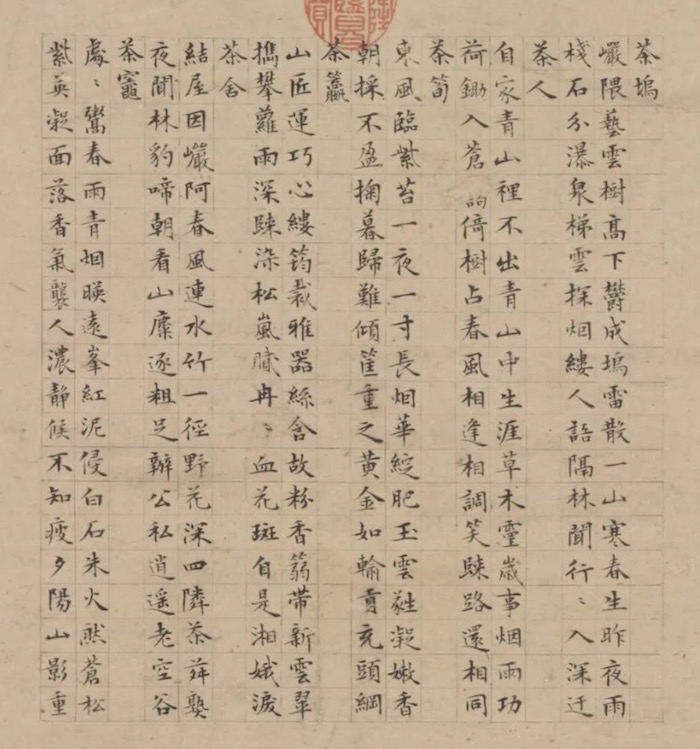
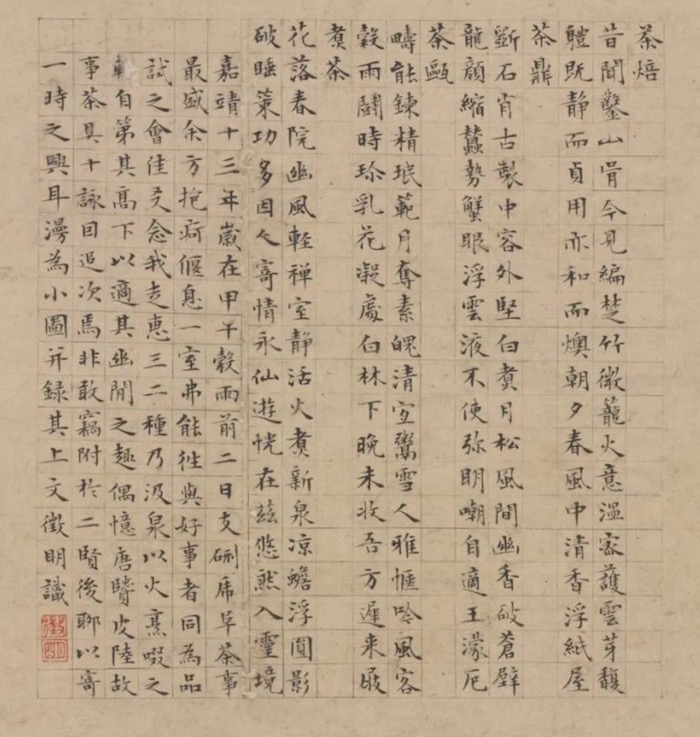
Wen Zhengming's Regular Script "Ten Odes of Tea Set"
Biluo Chunxiang Thyme Drunk
Suzhou people are famous for their love of tea. As early as the Tang Dynasty, Suzhou Dongting tea became a tribute. In the Northern Song Dynasty, the "Shuiyue tea" made by the monks of the Shuiyueyuan in the West Mountain of Dongting was the most beautiful, and Huqiu and Tianchi teas, which were as famous as Shuiyue tea at that time, were also famous all over the world. From the Ming and Qing Dynasties to the present, Biluochun in the east and west mountains of Dongting has shined brilliantly, leading the way.
Dongting Mountain is the origin of Dongting Biluochun, one of China's top ten famous teas. Chen Jiru, a man of the Ming Dynasty, said in "Taiping Qinghua": " There is immortal tea in the middle and west of Dongting, which is the moss on the tree. Sihao picks it as tea. " It can be seen that the legend of tea production in Dongting has been going on for a long time. East Dongting Mountain is a peninsula extending in Taihu Lake, and West Mountain is the largest island in Taihu Lake, known as the "Pearl of Taihu Lake".
The east and west mountain tea areas of Dongting, the soil is formed by the weathering of hill rocks, and the texture is loose. Affected by the water of Taihu Lake, the air is humid and fresh, and the clouds and mists are pervasive, providing excellent natural conditions for the growth of tea trees. During the Grain Rain, no matter you are walking on Dongshan or Xishan, as well as some small islands in Taihu Lake, you can always see tea pickers dotted on the banks of the mist and among the tea trees in the mountains and forests.
There are different opinions about the origin of Biluochun. According to legend, Biluochun was originally a wild camellia, which was born on Biluofeng in Dongting Mountain. The local tea farmers named it "Scaring Fragrance" because of its unique fragrance. One year, the prime minister of the Ming Dynasty, Wang Jia, returned to his hometown and felt that the name was indecent, so he named it "Biluochun" according to Biluofeng, the place of origin. Another theory is that Kangxi visited the south, and the governor offered this tea. After Kangxi tasted it, he was full of praise, so he named it "Biluochun".
No matter where the name "Biluochun" comes from, the name is really appropriate. Its shape is curly like a snail, silver and green with hidden emerald green, and the strands are slender and covered with white hair.
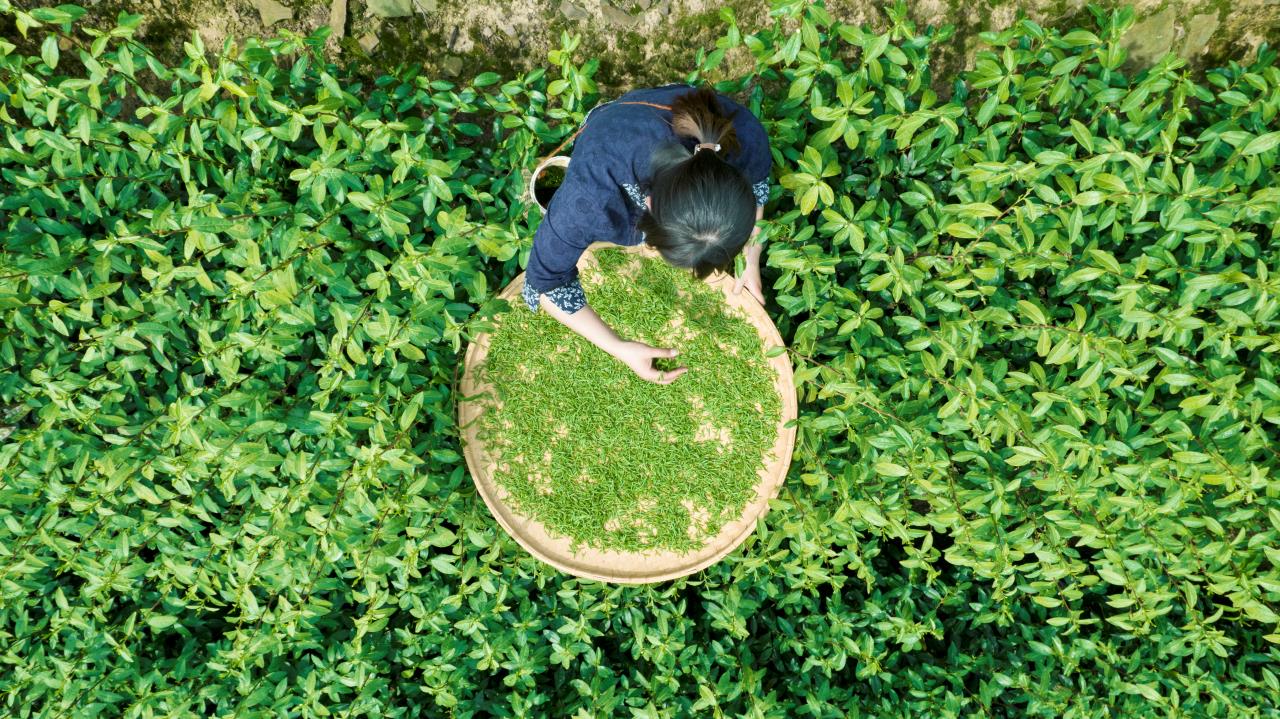
Biluochun picking site
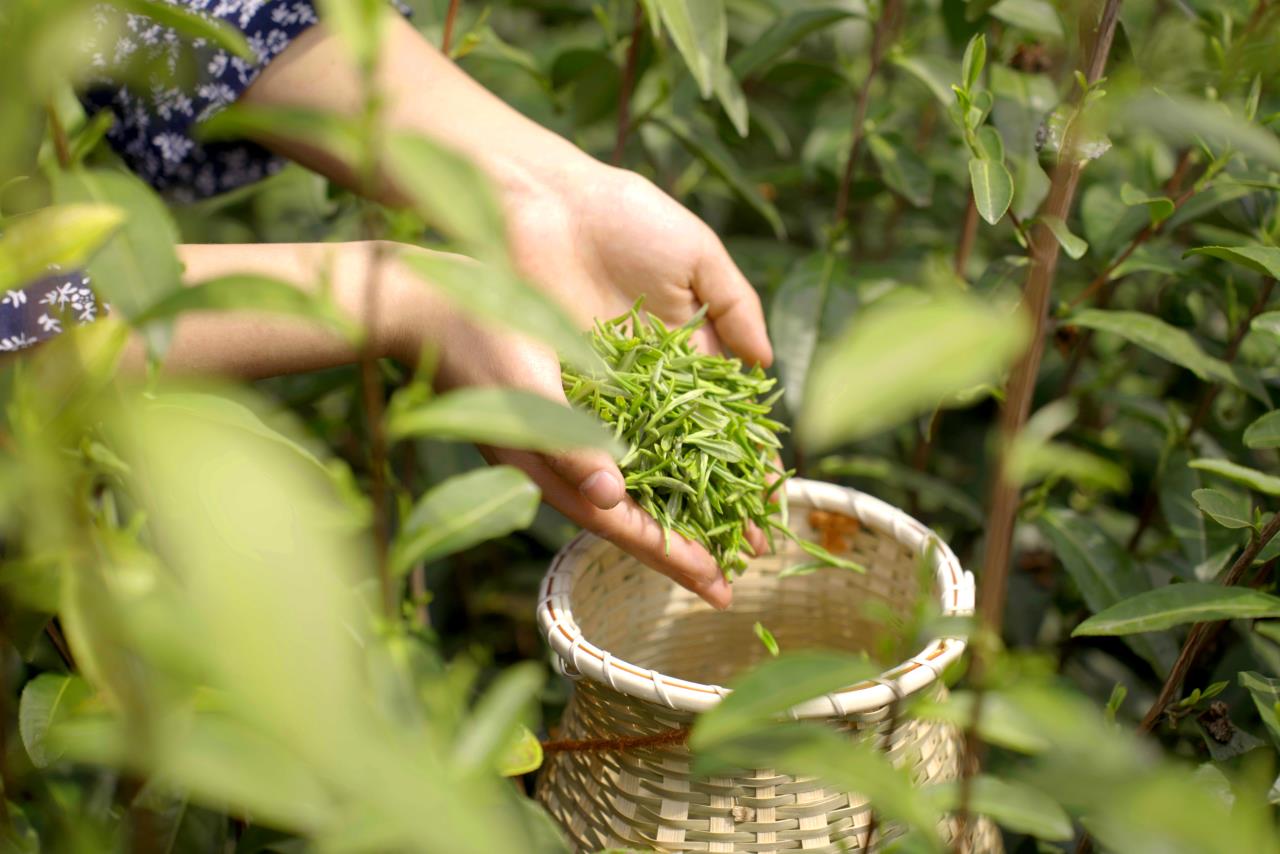
Biluochun picking site
The high fragrance of Biluochun comes from "the tea absorbs the fruity fragrance, and the fruit smells the tea flavor". The Biluochun tea-producing areas in the east and west mountains of Dongting are famous tea and fruit intercropping areas in my country.
In spring, I came to Xishan, the largest island in Taihu Lake. Looking at the tea mountain from a distance, the first thing you see seems to be an orchard, but there are no tea trees. As the saying goes, "everywhere you enter the mountain, there are green flowers, and the green snails are fragrant and intoxicating."
"The tea trees are all hidden under the fruit trees. You can see that there are loquat trees, bayberry trees, chestnut trees, orange trees, red dates, persimmons, and green plums on the mountain." The provincial inheritor of the production skills of Dongting Mountain Biluochun, a national intangible cultural heritage, Xishan Biluochun Zhou Yongming, the founder of the tea factory, took the surging journalists to climb the tea mountain. "We happen to be between 30 degrees and 32 degrees north latitude, which is most suitable for the growth of tea trees. The climate is suitable and the pH of the soil is between 4 and 6. Thanks to Dongting Mountain And Taihu Lake water, the tea trees grow well, and the fruit trees bear well, it can be said that what kind of trees can be planted here can bear the same kind of fruit.”
"The ancestors made full use of such land resources and interplanted fruit trees and tea trees on the same land. The fruit trees on the east and west mountains almost have flowers every month and fruit every season, and the characteristic of tea trees is strong adsorption. They Roots and branches absorb the same nutrients. Biluochun has a full aroma, and the high quality is because the tea absorbs the fruity aroma and smells like tea. There is another very important reason for the quality assurance of Dongting Biluochun, that is, about 75% of our tree species are traditional The group species that come down, that is, ancient tree species, are very resistant to foam and have rich flavors.”
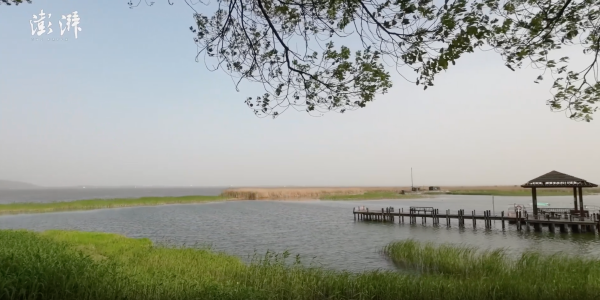
A scene of Taihu Lake in Wuzhong District, Suzhou

tea tree in orchard

The Biluochun tea-producing areas of Dongting Dongshan and Xishan are famous tea and fruit intercropping areas in my country.
After getting off the tea mountain, Zhou Yongming took the author to the Xishan Biluochun planting resource protection base. In this protection base, there are 271 old tea trees over 70 years old. Silk tea"...Zhou Yongming counted the different varieties of old tea here, "We picked this 'thread tea' when we were young. Although its leaves are very thin, it is really sweet, flowery and fruity after frying. The flavor is the strongest. These are the original species that have survived thousands of years of cultivation and are the 'roots' of Biluochun."
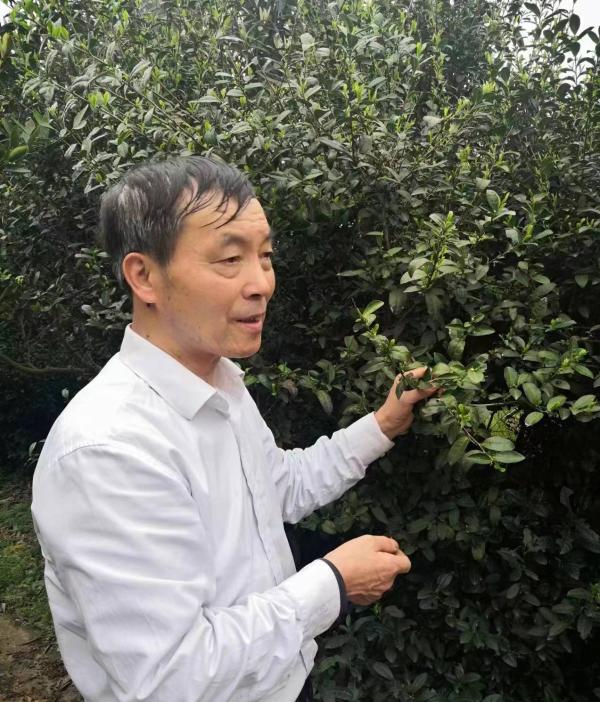
Zhou Yongming introduced old tree species to The Paper at the Xishan Biluochun Planting Resources Protection Base
Walking from the tea garden to the tea room, drinking a cup of Biluochun tea, I feel that the room is full of fragrance. Fresh and tender green tea can be brewed using the top-throwing method. Pour 70% to 80% of the water at 80 degrees into the cup, and then put in the tea leaves. The green buds and leaves will float up and down with the water, and the bottom of the cup will be dyed in spring. After Biluochun absorbs water and stretches, it will release small bubbles, just like a white dragon playing with water and spitting out beads. When the buds and leaves sink slowly, the pekoe will appear like "flying spring flowers".
The brewing method of drinking tea in the Ming Dynasty is similar to that of the present. It feels kind to think of those famous literati in the history of calligraphy and painting who also tasted a cup of Taihu tea in this way.
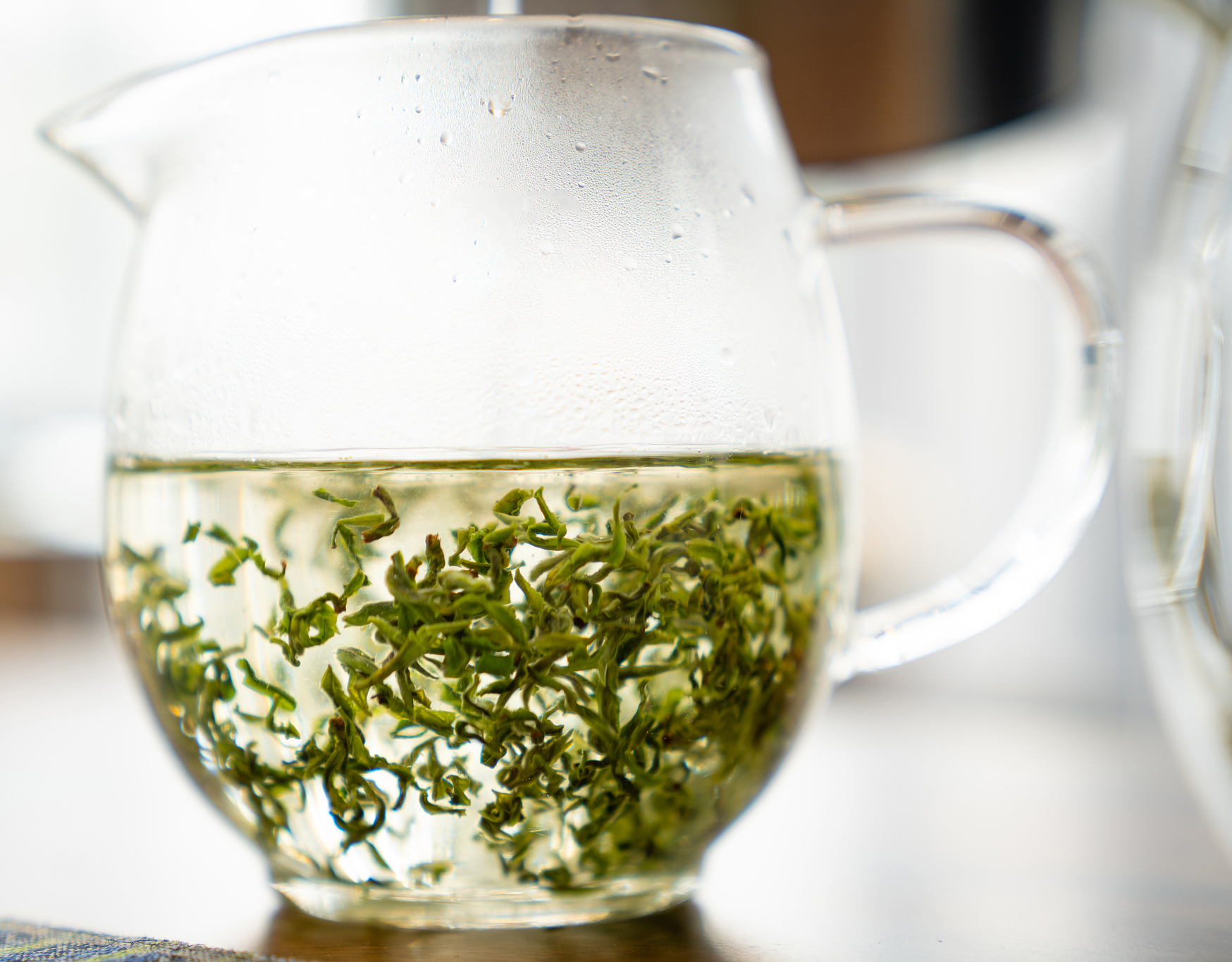
Biluochun's "Dancing Spring Flowers" Trend
Back to basics, a cup of "Ming Dynasty tea"
When it comes to the history of tea drinking, most people know that "it flourished in Tang Dynasty and flourished in Song Dynasty". But whether it is the method of frying tea in the Tang Dynasty or the method of ordering tea in the Song Dynasty, they are very different from our current tea drinking methods. The basis of tea drinking in the Tang and Song Dynasties was steamed green dough cake, which was not only complicated to make, but also the drinking process was complicated and lengthy. In the Ming Dynasty, the famous government decree of "abolishing the regiment and changing to disperse" was issued, which made the method of drinking tea similar to the current brewing method popularized.
Shen Defu in the Ming Dynasty wrote "Yehuo Compendium Supplement": "The top is to work hard for the people, stop making dragon balls, but pick bud tea to make progress... Press the tea to add spices, smash it into fine cakes, and the taste has been lost... Today Only those who take the essence of the first sprout, draw a spring and place a tripod, and inhale it as soon as it is brewed, thus opening the ancient school of tea drinking. "
This is the well-known event of "abandoned group changed to scattered" in the history of Chinese tea. In September of the twenty-fourth year of Ming Hongwu (1391), Ming Taizu Zhu Yuanzhang issued an edict to abolish tuancha and replace it with tribute leaf tea (loose tea). People at that time spoke highly of this, thinking that Tang and Song Dynasties added other fragrances to tea or pounded it into powder, which had lost its true flavor. However, the essence of tea is obtained by using the drinking method of 逹 (same as "Yue"), directly boiling spring water to brew loose tea.
So far, the art of drinking has returned to its original nature, and epoch-making changes have taken place. The rise of loose tea has gradually integrated with social life, folk etiquette, etc. The processing technology of loose tea has become more refined, and its appearance and inner quality have been greatly improved. At the same time, it also provides corresponding conditions for the pursuit of the traditional "literati tea" to enhance the realm of tea tasting.
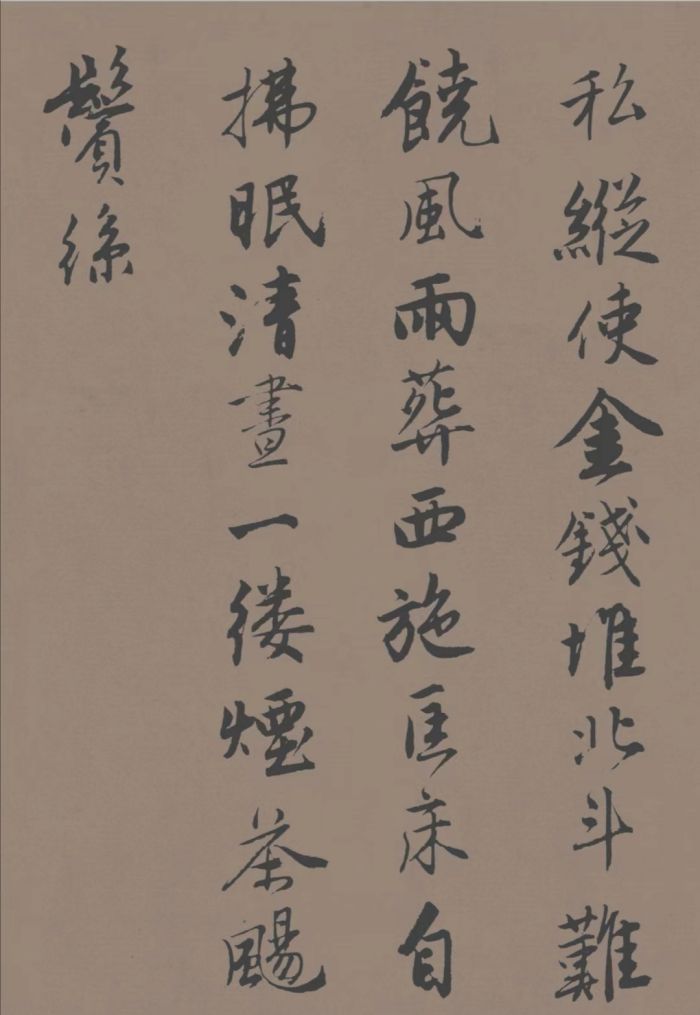
Tang Yin's "Poetry on Falling Flowers" (partial), Suzhou Museum Collection
What needs to be seen is that behind the prosperity of "literati tea" in the Ming Dynasty is the struggle and struggle between scholar-bureaucrats between the tradition of "studying well and becoming an official" and resigning from office. For the literati in the Ming Dynasty, Zhu Yuanzhang created a chilling political environment for them when he founded the country, violently recruited officials, and forcibly recruited reclusive literati. Although the cruel government eased somewhat in the middle and late Ming Dynasty, the disaster of the party's imprisonment continued. The relatively relaxed political atmosphere given to scholar-bureaucrats in the Tang and Song Dynasties was no longer there, and the literati in the Ming Dynasty had to focus on natural landscapes, piano, chess, calligraphy and painting, and tea was thus integrated into their poetry, calligraphy and painting skills.
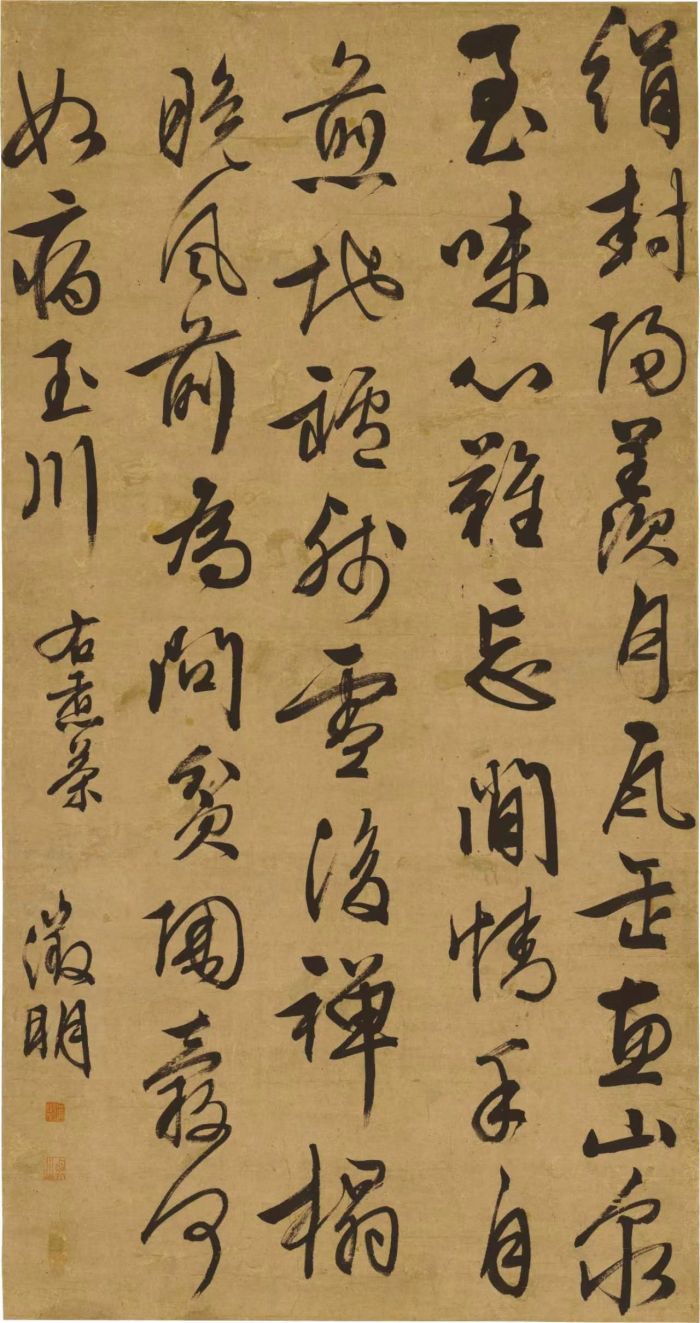
Wen Zhengming's Poetry Axis of Cooking Tea in Running Script, collected by Nanjing Museum
According to the China Tea Museum, there were as many as 50 tea books in the Ming Dynasty. Yu Qingyin had his own unique insights into the Spectrum; Tian Yiheng wrote "Cooking Spring Essays" based on the predecessors; Lu Shusheng and Zhongnan Mountain Monk Mingliang tried Tianchi tea together and wrote "Tea Lao Ji", which reflected the taste of life of the hermit; Zhang Yuan Yuan wrote "Tea Records" based on his long-term experience; Xu Cishu wrote "Tea Shu", which is specialized in tea theory;
Buy Qingshan only grow tea
Among the many good tea literati in the Ming Dynasty, the Wumen School of Painting deserves special attention. Shen Zhou, Wen Zhengming, Tang Yin and Qiu Ying not only made tea paintings and poems about tea, but also were proficient in tea theory.
As the spiritual leader of the Wumen School of Painting, Shen Zhou was not only a painter, but also a hermit. He was forced to become an official many times throughout his life, but he refused to accept his resignation, and died in "recluse" at the age of 82. He also has a special liking for tea drinking. According to the records in "Zhujia Collection Painting Book" and "Ziyiyue Zhai Calligraphy and Painting Record" in Qing Dynasty, Shen Zhou once created tea paintings such as "Fire Dragon Cooking Tea" and "Meeting Tea". Related tea books. Unfortunately, these paintings are not known where they were lost and cannot be seen for the time being. It is a little gratifying that we can still get a glimpse of the appearance of the gatherings of Shen Zhou and Wu Chinese scholars and officials from "Wei Yuan Ya Ji Tu".

Shen Zhou's "Wei Garden Collection"
In the fifth year of Chenghua (1469), Shen Zhou and Liu Jue, who were 42 years old at the time, went to the residence of their friend Wei Chang. Li Yingzhen, Zhu Hao, Chen Chen, Zhou Ding and other four people visited one after another, so the six people gathered in Weiyuan , Compose poems and draw pictures, drink wine and drink tea. Shen Zhou described the situation of this elegant gathering, the picture is majestic, but in the distance there are steep peaks, mountains covered with moss, covered with mist. The spring water flows straight down the mountain stream and merges into a gurgling stream. In fact, the picture has been separated from the real scene of "Wei Garden". Shen Zhou chose "meaning" instead of "shape". Under the thatched pavilion by the creek, Shen Zhou created the image of several people sitting on the ground with a few strokes, the servant boy stood sideways with a piano, and an old man came not far away pulling a stick.
There is no specific plot of drinking tea in the picture, but there is a poem inscribed by Shen Zhou on the top of the picture scroll: "If you disturb the city, why not build a hut by yourself. You have lived far away for three generations, and you have opened a garden for more than a hundred bows. The monk taught the method of frying tea, and the children planted trees. Books. Searching for secluded knowledge, and getting out of the market, is a towel car. " Judging from the inscription of this picture scroll, the theme of the poems in this gathering is to express their own opinions around the idea of seclusion, expressing everyone's pursuit of detachment from the world.
"Wei Yuan Ya Ji Tu" is also of great significance for understanding the changes in Shen Zhou's artistic creation. Wen Zhengming, Shen Zhou's disciple, once commented on Shen Zhou's painting style around the age of 40: before the age of 40, Shen Zhou was good at painting with skill and precision, while after the age of 40, Shen Zhou surpassed the influence of his predecessors, writing freely and innocently. Since then, Shen Zhou also developed a new style of painting for literati paintings in the Ming Dynasty. On the basis of inheritance laws, personal interests are poured out to the fullest.

Qiu Ying, "Writing Sutras and Exchanging Tea" (Part) Collection of Cleveland Museum of Art
Compared with Shen Zhou, the remaining three members of the "Four Families of the Wu School" left much richer paintings of tea events. Qiu Ying, who is good at fine brushwork and heavy color, was originally from Taicang, Jiangsu, and later moved to Wu County (now Suzhou). His paintings of tea events have been recorded, including "Lin Zhao Mengfu Writing Sutras and Changing Tea", "Pine Brewing Tea", "Garden Bureau", "Cooking Tea and Washing Inkstone" and so on.
Tang Bohu, a romantic and gifted scholar, left many tea poems. Among them, the tea poem "A Journey to Cuifeng" is inferred by later generations to "boil the Dongshan Enlightenment Spring", which may refer to drinking Biluochun tea.

Tang Yin's "Shi Ming Tu" volume, ink and color on paper, collected by the Palace Museum
Among Tang Yin's tea paintings, "The Picture of Shiming Tea" is the most famous. The surname of "Shiming" is Chen, who is Wang Chong's friend and neighbor, and has a close relationship with Tang Yin. Tang Yin made this picture with Chen's name as the title, and embedded the word Shiming into the poem. In the distant view of the picture, there are mountains and screens, waterfalls flying down, and water vapor. There are several thatched huts under the ancient pines. The owner of the house reads and drinks tea by the window, and the boy in the next hut is boiling water and tea. There is a self-inscribed poem in the painting:
What do you do when the day is long, the tea bowl will be held by yourself.
It is expected that under the south window, the breeze will fill the temples.
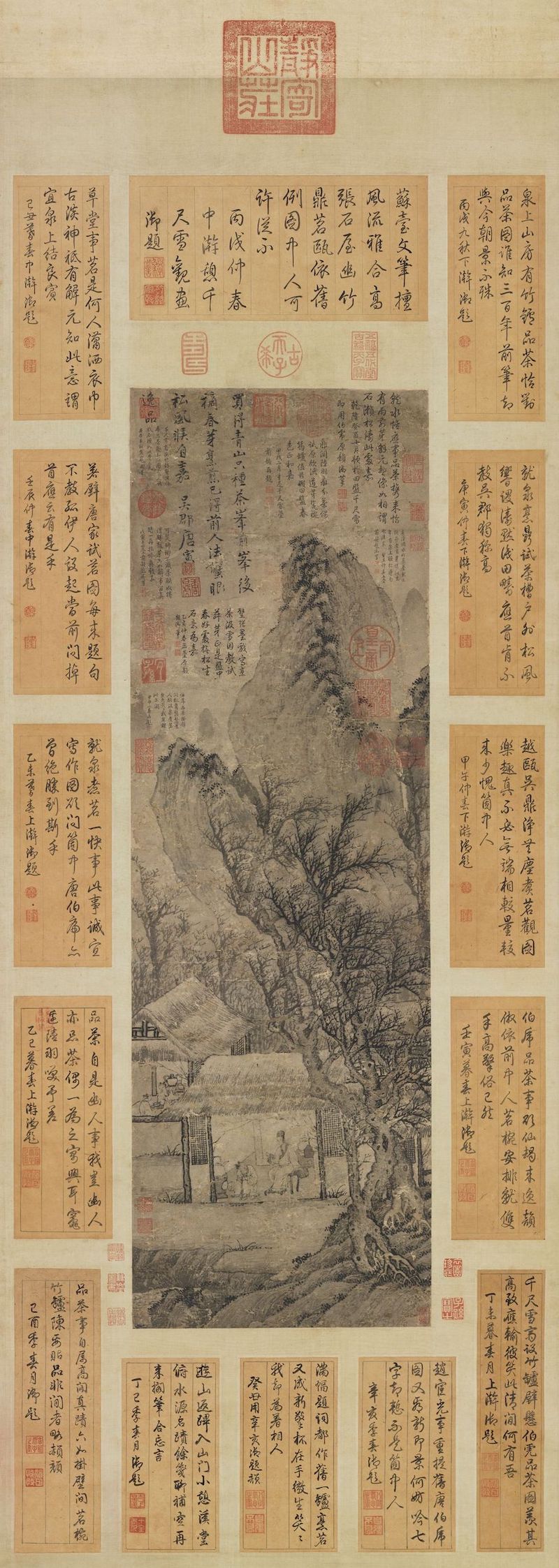
Tang Yin's "Tea Tasting Picture" axis Collection of the National Palace Museum, Taipei
Tang Yin's other "Tea Tasting Picture" is even more enjoyable. There are three couplets in the thatched house in the cold forest. The owner sits in front of the desk and reads a book, and a child squats in the corner of the house, fanning the fire to boil the spring. Reminiscent of Tang Yin's life, he became famous as a young man with amazing talent, but because of his wild behavior, he was not allowed to be promoted to the censor, so his dream of "golden list title" was shattered, and he was implicated in Xu Jing's case and imprisoned. It tastes the coldness of the world. "Tea Tasting Picture" self-titled seven-character poem:
The green hills I bought only grow tea, and the spring buds are picked in front of the peak and behind the peak.
Cooking and frying have been done by predecessors, and crab eyes and pines are self-satisfactory.
In the poem, "crab eye" refers to the tiny air bubbles that rise when the tea is nearly boiling, and "pine wind" describes the sound of water rising when the tea is boiled, and the tea is "not old" when boiled to this level.
"Buying green mountains and only growing tea" is of course Tang Yin's pursuit of a secluded life based on green mountains and accompanied by fragrant tea. It's just that this pursuit is destined to be a beautiful wish that cannot be realized for Tang Yin, who is frustrated in the second half of his life. A poem with only 28 characters expresses the inner vicissitudes of this Jiangnan talent.

Wen Zhengming's "Zhen Shang Zhai Tu" volume, collected by Shanghai Museum
Among the four families of Wumen, Wen Zhengming is the one with the most outstanding attainments in tea studies. He loves tea, understands tea, and is proficient in tea ceremony.
In order to drink a good cup of tea, Wen Zhengming would also "use talismans to mix water". Good tea needs good water, and Wen Zhengming often sent his followers into the mountains to draw spring water to make tea. Because he was afraid that his attendants would take water at random, he took the "bamboo talisman" as a token and handed it to the monks in the Quanbian Temple. After the entourage finished drawing water, he brought the bamboo talisman back with the water. .

Wen Zhengming's "Huishan Tea Party Picture" volume

"Huishan Tea Party Map" Inscribed by Cai Yu
Wen Zhengming's "Huishan Tea Party Picture" records an elegant event with friends Cai Yu, Wang Shou, Wang Chong, Tang Zhen and others who also visited Huishan in Wuxi and had a tea party at Erquan Pavilion. In the picture, there are people sitting on the ground by the spring well to discuss the Tao, incense burners, bottles and tea sets are placed on the table beside the pavilion, and two people are walking from the winding path under the pine. In many of Wen Zhengming's poems, we can see such an elegant gathering scene of meeting friends with tea and exchanging calligraphy and painting. The tea in the hands of literati is no longer just a utensil entity, but a natural medium for them to return to nature and pursue their original intentions.
As a disciple of Shen Zhou, Wen Zhengming's artistic outlook is not so eye-catching compared to Tang Yin's openness and subtlety. However, in Guan Wen Zhengming's paintings and poems, we can see the broad-minded detachment under the peacefulness. With the accumulation of years, he followed his teacher Shen Zhou, and achieved the unity of scenery and spirit, image and heart in the creation of literati paintings.

Wen Zhengming's "Moon Steps in the Atrium" Nanjing Museum Collection
In "The Picture of Stepping on the Moon in the Atrium", we see Wen Zhengming's "on the thirteenth night of the 10th lunar month, drunk with the guests, starting the atrium, the moonlight is picturesque, when the green trees are sparse, the shadows are on the ground, the world is silent, Gu Shixinran, because he ordered the boy to cook bitter tea and sip it, he was still sitting on the eaves of the wind, and he didn't realize it was Bingye. "
In his own title, Wen Zhengming wrote:
In the middle of the night, the sky turns pale, and the courtyard is full of night and smoke.
Hundreds of millions of miles away from Penglai, Ziyun flew before falling into the rails.
Who is laughing at Li Baxian, the bright moon has lived for thousands of years.
Look at another poem by Wen Zhengming included in "Wen's Five Family Collection": " Xuzhai sits in deep silence, the cool sound brings out the beauty, the miscellaneous pendant shakes the sky wind, and the solitary lute pours out the flowing water. Where does the sound come from? Cang The pole is in the courtyard. If there is a response, the sound and ear are the only one. The sound of the bamboo is good, and my ears are also clear. Who is listening to the bamboo? It is up to you to know and listen. People are clearer than bamboo, and bamboo is thinner than a gentleman. , the voice speaks to the heart, and one thing talks about each other. ”
So cheerful! Entering the entrance of fragrant tea, we seem to have entered the cool night when the clear river hangs in the sky and the blue tiles are flying frost. Facing the ancient times and the moon with him, wash away the dust in your chest.
When the 89-year-old Wen Zhengming wrote on the shore of Taihu Lake, " Who will really reward after the masters go? A wash in the cold spring and a sigh of relief ", people can't help but wonder whether the old man is worried that no one will be able to appreciate it in the future. A good cup of tea from this spring water?
On February 20th in the thirty-eighth year of Jiajing (1559), after the children laid out the pens, ink, paper and inkstone, and made tea, the 90-year-old Wen Zhengming wrote at his desk as usual. Then, he passed away leisurely in front of the table case.
